Rome Club Report 2018, Chapter 3.6: “Regenerative Urbanism: Ecopolis”
- Transfer
I propose to deal with the report of the “world government” myself, and at the same time help you translate the original source.

Section 1.7 describes the problems of a steadily growing population and some environmental problems of urbanization. But it also mentions the important fact that urbanization helps stabilize the population.
Following the logic of co-author Gerbie Girardeh, cities should move away from their now essentially linear metabolism, with resources flowing through the city system without much concern about their origin or the designation of waste. Inputs and outputs are still considered to be mostly unrelated. This is one of the drawbacks of urbanization, which, nevertheless, has the unintended, but very welcome, effect of a rapid decline in the birth rate, while at the same time making families happier and more prosperous.
Of course, cities need to move towards circular metabolism, giving plant nutrients — nitrogen, phosphate, and potassium — back to farmland, retaining carbon in soils and forests, reviving urban agriculture, effectively managing human settlements through renewable energy, connecting cities to regions, these measures are the basis for creating viable new urban economies.
The challenge of our time is to transform the highly unstable model of today's cities into what Herbie Girarde calls "Ecopolis", a revitalizing city. Cities that are our main home should respect the basic laws of ecology.
The Ecopolis model is very similar to the fact that Agni Vlavianos Arvanitis, who also co-authored this report, previously mentioned with Biopolis, an ecologically sustainable zero-pollution city in which people and natural populations live in a harmonious balance. It emphasizes the ethical aspect of the new form of city life, which restores the nature and culture of the city: since people have a collective responsibility, they will be ethically responsible for the damage and problems delegated to future generations.

Picture. 3.8 Ecopolis, which restores the city, attracts many typically rural activities back to the urban region, such as market gardening, mixed farming and, most importantly, renewable energy. The dependence on fossil fuels and transport intensity is thus significantly reduced (Source: Girardet 2014)
The recent publication of the WBGU (Scientific Council for Global Environmental Change) covers these issues in detail. In its report on the “transformational power of cities” in 2016, written as a contribution to Habitat III (United Nations Conference on Housing and Sustainable Urban Development), it says that urbanization not only creates problems of sustainability at the local level, but also global ones. The problem is not only that cities often grow on the country's most productive agricultural lands, which makes them fruitless, but they also impose huge demands on a wide range of global resources: among them fuel, food, wood and metals are noticeably widespread.
The issues raised by the WBGU were first conceptually reviewed by the American urbanist Abel Wolman in his 1965 paper, Urban Metabolism. He developed a model to quantify the inflow and outflow of resources from a hypothetical American city with a population of one million people. The benefits of this approach are now widely understood. They make it possible to clearly understand the boundaries of the urban “system”, which helps explain how cities interact with the natural world. Integrating the biophysical and social sciences, Wolman helped clarify policy and technology options.
This thesis was further developed by Gerbi Girarde. It describes essentially linear metabolism, as indicated above. Nutrients and carbon are removed from agricultural land because the crop is produced and then processed and consumed. The resulting wastewater, with or without purification, flows into the rivers and coastal waters below populated areas, and the plant nutrients they contain usually do not return to agricultural land. Rivers and coastal waters around the world are polluted with a mixture of municipal wastewater and toxic waste. Of course, this must change. Plant nutrients — nitrogen, phosphate, and potassium — must return to agricultural land that feeds cities that store carbon in soils and forests (see Section 3.1), the revival of urban agriculture, efficient use of human settlements through renewable energy sources, re-connecting cities to their regional ecosystems. But given the scale of urbanization that is happening all over the world, the prospects for both people and nature are still barely understood, and even more so apply.
The concept of restoring the city is designed to solve this issue. It is not only about greening the urban environment and protecting nature from physical urbanization — no matter how important such initiatives are, but also about the positive steps of citizens to create revitalizing urban systems of production, consumption, transport and construction. Humanity must find ways to initiate:
A new comprehensive urban planning and management science seems to be needed. Traditional urban science, technology and planning are mainly focused on the prospects of gigantic investments in infrastructure, promising lucrative contracts for firms and glorious careers for municipal authorities. There is a lack of understanding of the relationship between cities and the living world beyond.
In recent years, a large number of urban rehabilitation projects have been carried out in the dilapidated cities of industrialized countries. They greatly helped people. But the concept of recovering cities goes further: it focuses on the links between the urban population and nature, between urban systems and ecosystems.
A step in the right direction was taken during Habitat III (Third United Nations Conference on Housing and Sustainable Development, Quito, Ecuador, 2016), which adopted the New Urban Agenda (NUA). It consists of a wide range of topics on sustainable urban development, compiled in one document adopted by the international community. For the first time, municipalities and cities were officially recognized as key actors in sustainable development.
So far, initiatives aimed at the efficient use of resources, restoring urban planning focused primarily on eco-areas in cities in Europe and the United States. Examples include Solarsiedlung in Freiburg, Germany; the development of the zero energy of Beddington in Sutton, South London; eco-districts in Nancy, France; Hammarby Sjöstad in Stockholm; and Portland Eco-Rayon Initiative. In most cases, this was made possible by the adoption of appropriate national legislation.
Another important issue is that cities, as groups of people, can be very vulnerable to natural disasters such as earthquakes, tsunamis, tides and floods. More and more serious climatic consequences are approaching, especially in the river valleys and near the sea coasts.
The most expensive real estate in the world, as a rule, is located in coastal areas. For example, of the 25 most populated districts of the United States, 23 are located in coastal areas. Worldwide, major urban areas such as New York, Amsterdam, London, Hamburg, Copenhagen, Venice, Tokyo, Shanghai, Calcutta, the Nile Delta, Dacca, Bangkok, Jakarta and Manila are vulnerable to a 1 meter rise in sea level, which is widely predicted by climate scientists by the end of this century. To solve this existential problem, it is primarily viewed as a local problem: huge investments in sea and dam protection should be financed in the coming decades to cope with rising sea levels and more intensive precipitation and floods, in particular, over long distances. inland from the sea coast along the rivers.
Co-author Yoshitsugu Hayashi stresses the need to avoid construction in areas where future disaster risks from climate change can be expected. When planning disaster prevention infrastructure, such as dams at sea or river, one should clearly understand the height necessary to ensure maximum “sustainability”, namely to prevent catastrophic floods and deliberate retreat of settlements, leaving more space for floods. The concept of “delta norm”, adopted in Japan in the 16th century and in the present-day Netherlands, is an excellent precedent for such measures.
Countries should also take active measures to curb urban sprawl. When planning road and rail infrastructure, they should focus on optimizing work to facilitate access to workplaces, shops, hospitals or natural parks while minimizing infrastructure maintenance costs and CO2 emissions. To reduce and improve transport infrastructure, it is necessary to carefully develop the efficiency of land use and transport systems in all cities.
Future generations should pay more to maintain the necessary urban infrastructure, while having lower and lower budgets, most likely due to the aging population. Our generation must plan urban infrastructure, avoiding unbearable costs for future generations.
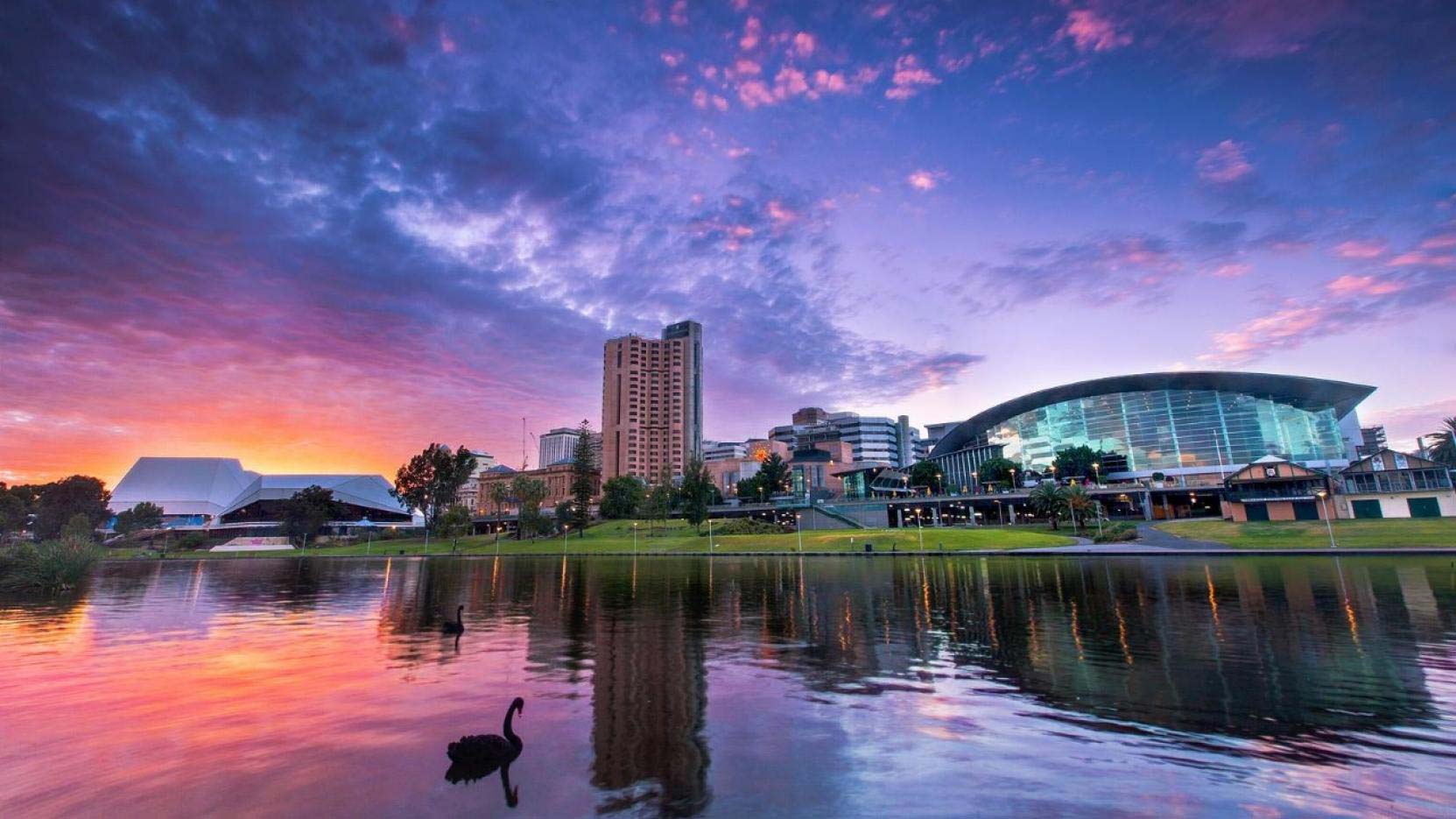
At the turn of the century, residents of South Adelaide were concerned about the reduction in water supplies from the Murray River. South Australian Prime Minister Mike Rann decided it was time to explore the broader sustainability issues in this urban region of 1.3 million people. In 2003, Herbie Girarde was invited to Adelaide as a “local thinker” to initiate discussions on how to combine environmental sustainability and new job creation initiatives.
During the 10-week period of hundreds of workshops and lectures that brought together people from all walks of life in Adelaide, many interrelated issues were explored. At the end of his stay, Girardet prepared a 32-point plan to help transform South Australia's environmental performance. During the 8-year premiership of Mike Rann and 5 years after that, most of this was realized:

Forty-five percent of electricity in South Australia is now secured from wind and solar technology; energy and water efficiency have become mandatory; all organic waste is recycled and returned to urban gardens and land on the outskirts of the city, which is also irrigated with recycled waste water; three million trees were planted in the fight against erosion and air pollution; Lochiel Park Solar Village is built as a development model; Thousands of people work in the city on a new, "green" economy
In addition to these initiatives, Adelaide has also done a lot to improve the living conditions in its region. Pedestrian and bicycle paths have changed the inner part of the city; new tram lines were built; and many new housing was provided in converted warehouses and former factories. Adelaide, in the center of which there are famous parks, is currently among the five most livable cities in the world.
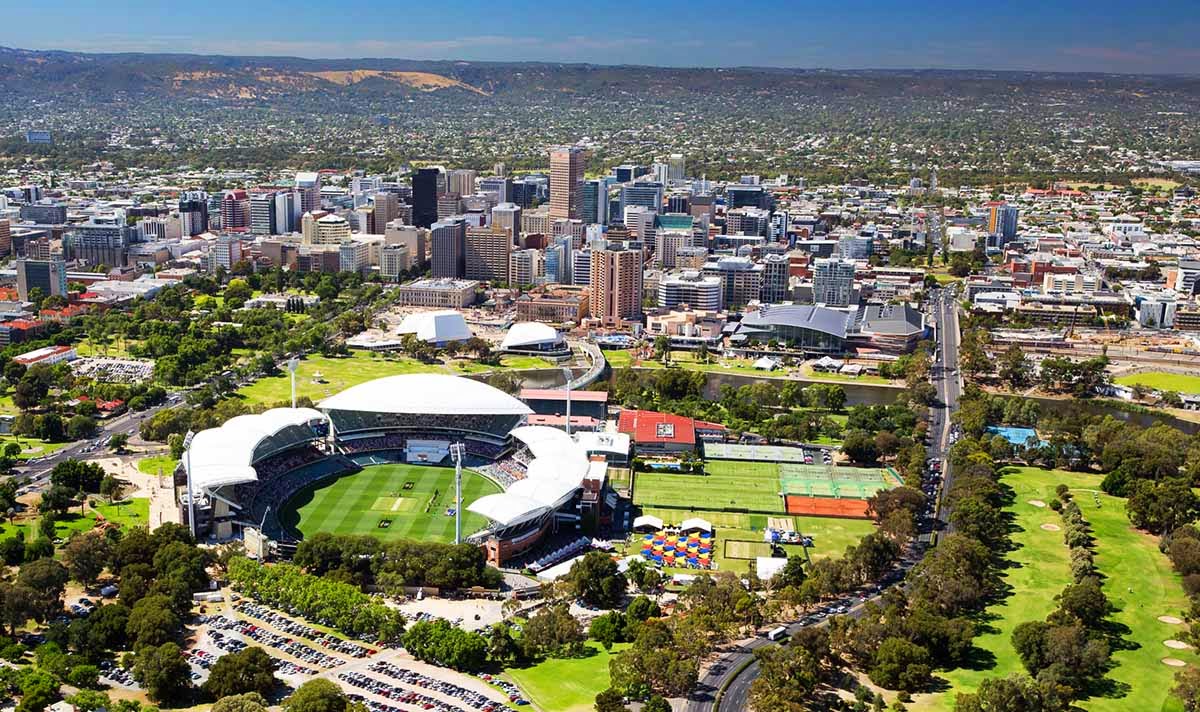
Greater Adelaide thus acquired many of the attributes of the rebuilding city. By December 2013, Adelaide had reached 45% of the electricity generated by wind turbines, and solar photovoltaic panels sold on PV-roofs to 150,000 (out of 600,000) homes, and Tindo, the world's first solar-powered bus, runs to most public buildings , and made solar hot water systems mandatory on new buildings. In addition, three million trees were planted in the city on 2,000 hectares to absorb CO2, as well as biodiversity, and also built the sunny village of Lochiel Park with its 106 eco-friendly houses. With all these measures, the large Adelaide area has reduced its CO2 emissions by 20% since 2003. Regarding the use of resources, Adelaide has implemented a zero waste strategy, based on ambitious processing incentives. The city collects 180,000 tons of compost per year from urban organic waste and uses recycled wastewater and this urban compost to process 2,000 hectares of land near the city. Thus, Adelaide has created thousands of new green jobs.
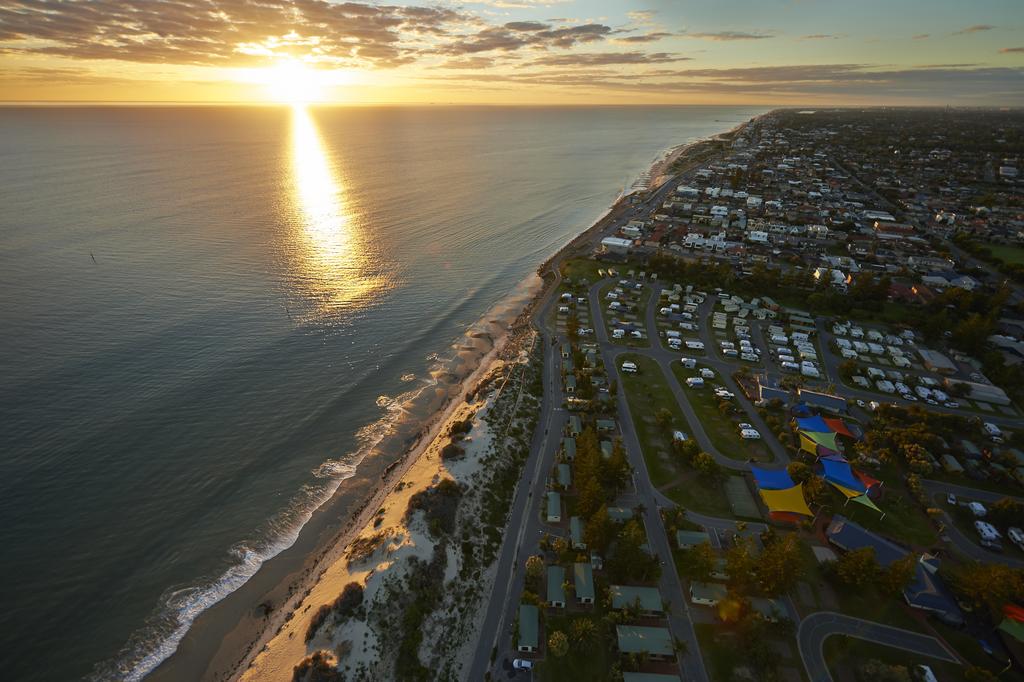
In recent decades, Copenhagen has made significant strides in becoming a livable as well as a sustainable city, also moving towards rebuilding.
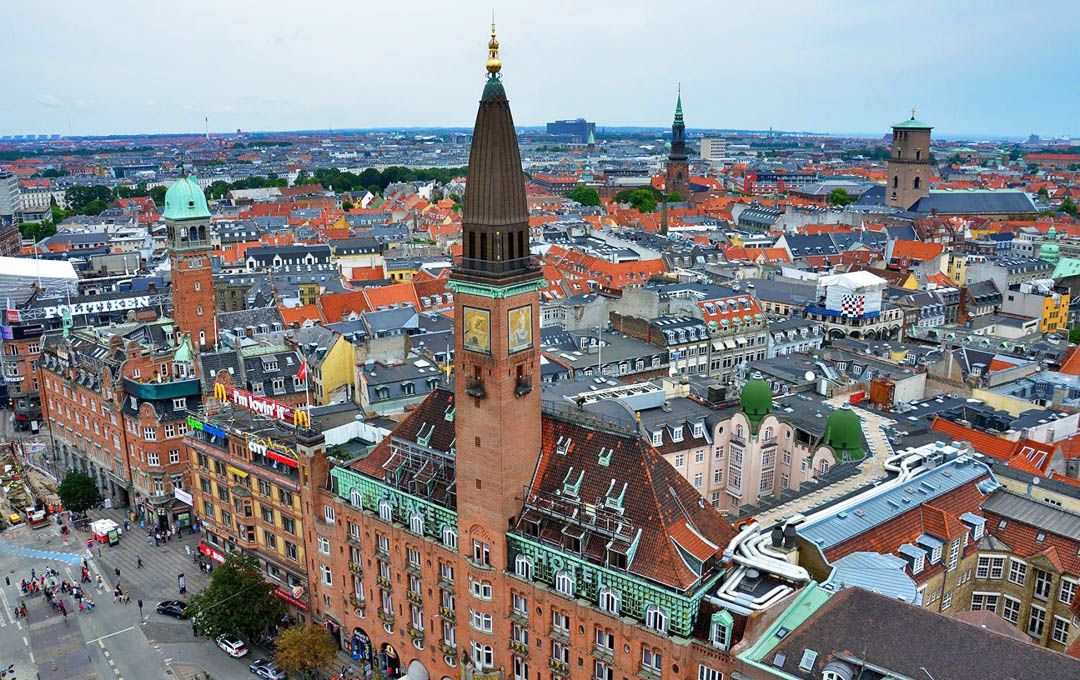
The starting point was the transformation of most of the city center into a pedestrian zone. This led to the creation of an "Mediterranean style" atmosphere, where markets, cafes and restaurants are increasing. Copenhagen is cycling more people than in most other cities. And initiatives in the field of energy efficiency, combined heat and power and renewable energy have advanced further than almost anywhere in the world. The same goes for waste management.
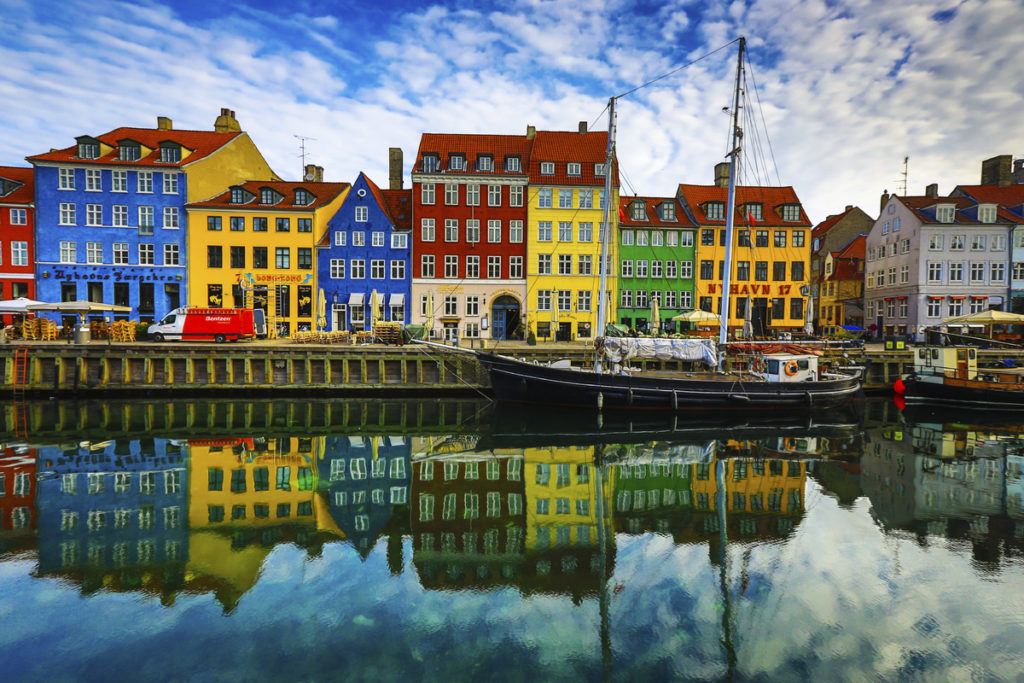
It all began in the 1960s, when the Copenhagen City Council decided to create a huge pedestrian zone without cars around its historic center. The pedestrian zone was combined with the creation of cycling routes, public transport schemes, combined heat and power systems, the development of renewable energy sources and recycling projects.

One person who inspired much of this change was Jan Gel, whose book “Cities for People” became an important reading for urban design professionals. He is excited by the prospect that by 2025 Copenhagen wants to become the first carbon neutral capital in the world, combining 50 different initiatives that include integrated transport, green architecture, district heating, wind power plants in and around the city, electric transport, intelligent network and efficient waste management.

These examples are currently used as models for restoring transformation in other cities.
To be continued ...
For the translation, thanks to Jonas Stankevichus. If you are interested, I invite you to join the "flashmob" to translate a 220-page report. Write in a personal or email magisterludi2016@yandex.ru
Preface
Chapter 1.1.1 “Different types of crises and feelings of helplessness”
Chapter 1.1.2: “Financing”
Chapter 1.1.3: “An Empty World Against Full Peace”
Chapter 3.1: “Regenerative Economics”
Chapter 3.3: “Blue Economy”
Chapter 3.4: “ Decentralized Energy ”
Chapter 3.5:“ Some Success Stories in Agriculture ”
Chapter 3.10:“ Tax on Bits ”
Chapter 3.11:“ Financial Sector Reforms ”
Chapter 3.12:“ Economic System Reforms ”
Chapter 3.13:“ Philanthropy, Investments, Crowdsors and Blockchains ”
Chapter 3.14: “Not a single GDP ...”
Chapter 3.15: “Collective Leadership”
Chapter 3.16: “Ch Obalo government "
Chapter 3.17:" Actions at the national level: China and Bhutan "
Chapter 3.18: “Literacy for the Future”

3.6.1 Ecopolis: Cyclic Resource Flows
Section 1.7 describes the problems of a steadily growing population and some environmental problems of urbanization. But it also mentions the important fact that urbanization helps stabilize the population.
Following the logic of co-author Gerbie Girardeh, cities should move away from their now essentially linear metabolism, with resources flowing through the city system without much concern about their origin or the designation of waste. Inputs and outputs are still considered to be mostly unrelated. This is one of the drawbacks of urbanization, which, nevertheless, has the unintended, but very welcome, effect of a rapid decline in the birth rate, while at the same time making families happier and more prosperous.
Of course, cities need to move towards circular metabolism, giving plant nutrients — nitrogen, phosphate, and potassium — back to farmland, retaining carbon in soils and forests, reviving urban agriculture, effectively managing human settlements through renewable energy, connecting cities to regions, these measures are the basis for creating viable new urban economies.
The challenge of our time is to transform the highly unstable model of today's cities into what Herbie Girarde calls "Ecopolis", a revitalizing city. Cities that are our main home should respect the basic laws of ecology.
The Ecopolis model is very similar to the fact that Agni Vlavianos Arvanitis, who also co-authored this report, previously mentioned with Biopolis, an ecologically sustainable zero-pollution city in which people and natural populations live in a harmonious balance. It emphasizes the ethical aspect of the new form of city life, which restores the nature and culture of the city: since people have a collective responsibility, they will be ethically responsible for the damage and problems delegated to future generations.

Picture. 3.8 Ecopolis, which restores the city, attracts many typically rural activities back to the urban region, such as market gardening, mixed farming and, most importantly, renewable energy. The dependence on fossil fuels and transport intensity is thus significantly reduced (Source: Girardet 2014)
The recent publication of the WBGU (Scientific Council for Global Environmental Change) covers these issues in detail. In its report on the “transformational power of cities” in 2016, written as a contribution to Habitat III (United Nations Conference on Housing and Sustainable Urban Development), it says that urbanization not only creates problems of sustainability at the local level, but also global ones. The problem is not only that cities often grow on the country's most productive agricultural lands, which makes them fruitless, but they also impose huge demands on a wide range of global resources: among them fuel, food, wood and metals are noticeably widespread.
The issues raised by the WBGU were first conceptually reviewed by the American urbanist Abel Wolman in his 1965 paper, Urban Metabolism. He developed a model to quantify the inflow and outflow of resources from a hypothetical American city with a population of one million people. The benefits of this approach are now widely understood. They make it possible to clearly understand the boundaries of the urban “system”, which helps explain how cities interact with the natural world. Integrating the biophysical and social sciences, Wolman helped clarify policy and technology options.
This thesis was further developed by Gerbi Girarde. It describes essentially linear metabolism, as indicated above. Nutrients and carbon are removed from agricultural land because the crop is produced and then processed and consumed. The resulting wastewater, with or without purification, flows into the rivers and coastal waters below populated areas, and the plant nutrients they contain usually do not return to agricultural land. Rivers and coastal waters around the world are polluted with a mixture of municipal wastewater and toxic waste. Of course, this must change. Plant nutrients — nitrogen, phosphate, and potassium — must return to agricultural land that feeds cities that store carbon in soils and forests (see Section 3.1), the revival of urban agriculture, efficient use of human settlements through renewable energy sources, re-connecting cities to their regional ecosystems. But given the scale of urbanization that is happening all over the world, the prospects for both people and nature are still barely understood, and even more so apply.
3.6.2 Rebuilding Cities
The concept of restoring the city is designed to solve this issue. It is not only about greening the urban environment and protecting nature from physical urbanization — no matter how important such initiatives are, but also about the positive steps of citizens to create revitalizing urban systems of production, consumption, transport and construction. Humanity must find ways to initiate:
- Strengthen environmental and restoration links between cities and the natural systems on which they depend;
- Updating of efficient renewable energy systems for human settlements around the world;
- A new way of life and economic opportunities that will encourage people to participate in this transformation process.
A new comprehensive urban planning and management science seems to be needed. Traditional urban science, technology and planning are mainly focused on the prospects of gigantic investments in infrastructure, promising lucrative contracts for firms and glorious careers for municipal authorities. There is a lack of understanding of the relationship between cities and the living world beyond.
In recent years, a large number of urban rehabilitation projects have been carried out in the dilapidated cities of industrialized countries. They greatly helped people. But the concept of recovering cities goes further: it focuses on the links between the urban population and nature, between urban systems and ecosystems.
A step in the right direction was taken during Habitat III (Third United Nations Conference on Housing and Sustainable Development, Quito, Ecuador, 2016), which adopted the New Urban Agenda (NUA). It consists of a wide range of topics on sustainable urban development, compiled in one document adopted by the international community. For the first time, municipalities and cities were officially recognized as key actors in sustainable development.
So far, initiatives aimed at the efficient use of resources, restoring urban planning focused primarily on eco-areas in cities in Europe and the United States. Examples include Solarsiedlung in Freiburg, Germany; the development of the zero energy of Beddington in Sutton, South London; eco-districts in Nancy, France; Hammarby Sjöstad in Stockholm; and Portland Eco-Rayon Initiative. In most cases, this was made possible by the adoption of appropriate national legislation.
3.6.3 Cities and natural disasters
Another important issue is that cities, as groups of people, can be very vulnerable to natural disasters such as earthquakes, tsunamis, tides and floods. More and more serious climatic consequences are approaching, especially in the river valleys and near the sea coasts.
The most expensive real estate in the world, as a rule, is located in coastal areas. For example, of the 25 most populated districts of the United States, 23 are located in coastal areas. Worldwide, major urban areas such as New York, Amsterdam, London, Hamburg, Copenhagen, Venice, Tokyo, Shanghai, Calcutta, the Nile Delta, Dacca, Bangkok, Jakarta and Manila are vulnerable to a 1 meter rise in sea level, which is widely predicted by climate scientists by the end of this century. To solve this existential problem, it is primarily viewed as a local problem: huge investments in sea and dam protection should be financed in the coming decades to cope with rising sea levels and more intensive precipitation and floods, in particular, over long distances. inland from the sea coast along the rivers.
Co-author Yoshitsugu Hayashi stresses the need to avoid construction in areas where future disaster risks from climate change can be expected. When planning disaster prevention infrastructure, such as dams at sea or river, one should clearly understand the height necessary to ensure maximum “sustainability”, namely to prevent catastrophic floods and deliberate retreat of settlements, leaving more space for floods. The concept of “delta norm”, adopted in Japan in the 16th century and in the present-day Netherlands, is an excellent precedent for such measures.
Countries should also take active measures to curb urban sprawl. When planning road and rail infrastructure, they should focus on optimizing work to facilitate access to workplaces, shops, hospitals or natural parks while minimizing infrastructure maintenance costs and CO2 emissions. To reduce and improve transport infrastructure, it is necessary to carefully develop the efficiency of land use and transport systems in all cities.
Future generations should pay more to maintain the necessary urban infrastructure, while having lower and lower budgets, most likely due to the aging population. Our generation must plan urban infrastructure, avoiding unbearable costs for future generations.
3.6.4 Adelaide

At the turn of the century, residents of South Adelaide were concerned about the reduction in water supplies from the Murray River. South Australian Prime Minister Mike Rann decided it was time to explore the broader sustainability issues in this urban region of 1.3 million people. In 2003, Herbie Girarde was invited to Adelaide as a “local thinker” to initiate discussions on how to combine environmental sustainability and new job creation initiatives.
During the 10-week period of hundreds of workshops and lectures that brought together people from all walks of life in Adelaide, many interrelated issues were explored. At the end of his stay, Girardet prepared a 32-point plan to help transform South Australia's environmental performance. During the 8-year premiership of Mike Rann and 5 years after that, most of this was realized:

Forty-five percent of electricity in South Australia is now secured from wind and solar technology; energy and water efficiency have become mandatory; all organic waste is recycled and returned to urban gardens and land on the outskirts of the city, which is also irrigated with recycled waste water; three million trees were planted in the fight against erosion and air pollution; Lochiel Park Solar Village is built as a development model; Thousands of people work in the city on a new, "green" economy
In addition to these initiatives, Adelaide has also done a lot to improve the living conditions in its region. Pedestrian and bicycle paths have changed the inner part of the city; new tram lines were built; and many new housing was provided in converted warehouses and former factories. Adelaide, in the center of which there are famous parks, is currently among the five most livable cities in the world.

Greater Adelaide thus acquired many of the attributes of the rebuilding city. By December 2013, Adelaide had reached 45% of the electricity generated by wind turbines, and solar photovoltaic panels sold on PV-roofs to 150,000 (out of 600,000) homes, and Tindo, the world's first solar-powered bus, runs to most public buildings , and made solar hot water systems mandatory on new buildings. In addition, three million trees were planted in the city on 2,000 hectares to absorb CO2, as well as biodiversity, and also built the sunny village of Lochiel Park with its 106 eco-friendly houses. With all these measures, the large Adelaide area has reduced its CO2 emissions by 20% since 2003. Regarding the use of resources, Adelaide has implemented a zero waste strategy, based on ambitious processing incentives. The city collects 180,000 tons of compost per year from urban organic waste and uses recycled wastewater and this urban compost to process 2,000 hectares of land near the city. Thus, Adelaide has created thousands of new green jobs.

3.6.5 Copenhagen
In recent decades, Copenhagen has made significant strides in becoming a livable as well as a sustainable city, also moving towards rebuilding.

The starting point was the transformation of most of the city center into a pedestrian zone. This led to the creation of an "Mediterranean style" atmosphere, where markets, cafes and restaurants are increasing. Copenhagen is cycling more people than in most other cities. And initiatives in the field of energy efficiency, combined heat and power and renewable energy have advanced further than almost anywhere in the world. The same goes for waste management.

It all began in the 1960s, when the Copenhagen City Council decided to create a huge pedestrian zone without cars around its historic center. The pedestrian zone was combined with the creation of cycling routes, public transport schemes, combined heat and power systems, the development of renewable energy sources and recycling projects.

One person who inspired much of this change was Jan Gel, whose book “Cities for People” became an important reading for urban design professionals. He is excited by the prospect that by 2025 Copenhagen wants to become the first carbon neutral capital in the world, combining 50 different initiatives that include integrated transport, green architecture, district heating, wind power plants in and around the city, electric transport, intelligent network and efficient waste management.

These examples are currently used as models for restoring transformation in other cities.
To be continued ...
For the translation, thanks to Jonas Stankevichus. If you are interested, I invite you to join the "flashmob" to translate a 220-page report. Write in a personal or email magisterludi2016@yandex.ru
More translations of the report of the Club of Rome 2018
Preface
Chapter 1.1.1 “Different types of crises and feelings of helplessness”
Chapter 1.1.2: “Financing”
Chapter 1.1.3: “An Empty World Against Full Peace”
Chapter 3.1: “Regenerative Economics”
Chapter 3.3: “Blue Economy”
Chapter 3.4: “ Decentralized Energy ”
Chapter 3.5:“ Some Success Stories in Agriculture ”
Chapter 3.10:“ Tax on Bits ”
Chapter 3.11:“ Financial Sector Reforms ”
Chapter 3.12:“ Economic System Reforms ”
Chapter 3.13:“ Philanthropy, Investments, Crowdsors and Blockchains ”
Chapter 3.14: “Not a single GDP ...”
Chapter 3.15: “Collective Leadership”
Chapter 3.16: “Ch Obalo government "
Chapter 3.17:" Actions at the national level: China and Bhutan "
Chapter 3.18: “Literacy for the Future”
"Analytics"
- "Come on!" - the anniversary report of the Club of Rome
- The anniversary report of the Club of Rome - embalming capitalism
- Club of Rome, jubilee report. Verdict: “The Old World is doomed. New World is inevitable! ”
- Hour: Report of the Club of Rome. Orgies of self-criticism
About #philtech
#philtech (технологии + филантропия) — это открытые публично описанные технологии, выравнивающие уровень жизни максимально возможного количества людей за счёт создания прозрачных платформ для взаимодействия и доступа к данным и знаниям. И удовлетворяющие принципам филтеха:
1. Открытые и копируемые, а не конкурентно-проприетарные.
2. Построенные на принципах самоорганизации и горизонтального взаимодействия.
3. Устойчивые и перспективо-ориентированные, а не преследующие локальную выгоду.
4. Построенные на [открытых] данных, а не традициях и убеждениях
5. Ненасильственные и неманипуляционные.
6. Инклюзивные, и не работающие на одну группу людей за счёт других.
Акселератор социальных технологических стартапов PhilTech — программа интенсивного развития проектов ранних стадий, направленных на выравнивание доступа к информации, ресурсам и возможностям. Второй поток: март–июнь 2018.
Чат в Telegram
Сообщество людей, развивающих филтех-проекты или просто заинтересованных в теме технологий для социального сектора.
#philtech news
Телеграм-канал с новостями о проектах в идеологии #philtech и ссылками на полезные материалы.
Подписаться на еженедельную рассылку

#philtech (технологии + филантропия) — это открытые публично описанные технологии, выравнивающие уровень жизни максимально возможного количества людей за счёт создания прозрачных платформ для взаимодействия и доступа к данным и знаниям. И удовлетворяющие принципам филтеха:
1. Открытые и копируемые, а не конкурентно-проприетарные.
2. Построенные на принципах самоорганизации и горизонтального взаимодействия.
3. Устойчивые и перспективо-ориентированные, а не преследующие локальную выгоду.
4. Построенные на [открытых] данных, а не традициях и убеждениях
5. Ненасильственные и неманипуляционные.
6. Инклюзивные, и не работающие на одну группу людей за счёт других.
Акселератор социальных технологических стартапов PhilTech — программа интенсивного развития проектов ранних стадий, направленных на выравнивание доступа к информации, ресурсам и возможностям. Второй поток: март–июнь 2018.
Чат в Telegram
Сообщество людей, развивающих филтех-проекты или просто заинтересованных в теме технологий для социального сектора.
#philtech news
Телеграм-канал с новостями о проектах в идеологии #philtech и ссылками на полезные материалы.
Подписаться на еженедельную рассылку
